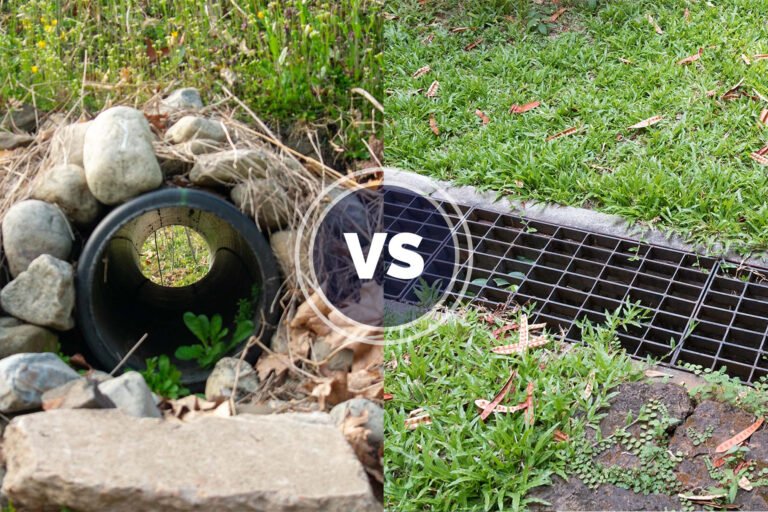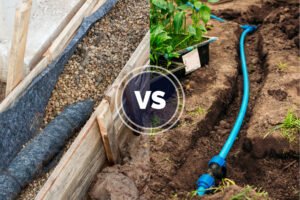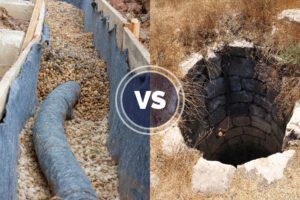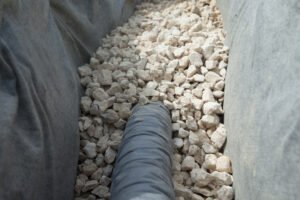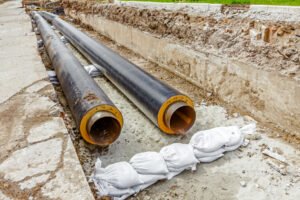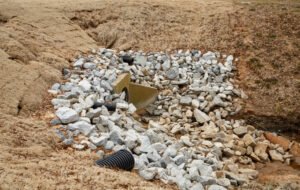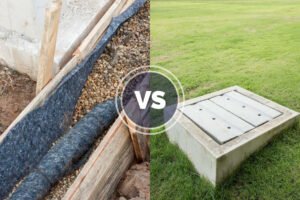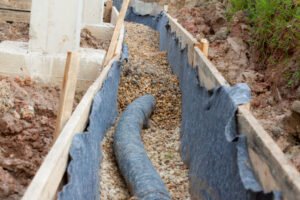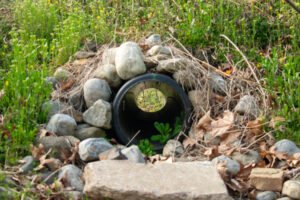Surface water certainly damages your foundations and landscape. And as marshy as it looks, excess water might even lead to mosquito breeding and make you sick. So, you need a drainage solution to discharge all the water runoff and maintain a dry yard.
French and trench drains are the most popular systems to drain the underground and surface water and release it to a low-lying area. However, people often confuse the two and might pick the wrong surface drain for their landscape.
Hence, we compared the different attributes and applications of a trench drain and french drain along with some tips and FAQs to help you pick the right surface drainage system for your yard. So, without further ado, let’s get started!
What Is a French Drain?
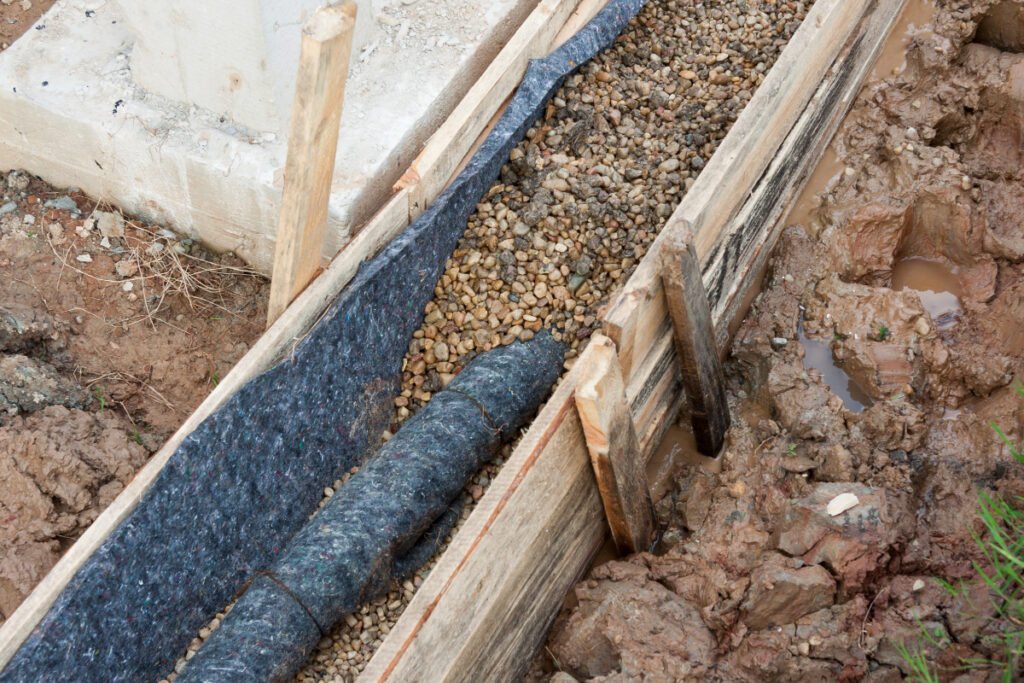
A french drain is a deep channel drain with a perforated pipe and a gravel cover that channels the standing water and discharges it into any nearby pond or low-lying area using gravity. Thus, french drainage stops flooding, surface water percolation and relieves the pressure from your basement systems.
How Does It Work: A french drain absorbs water from the top of the perforated pipe and directs it away using the pipe slope. And it has additional holes or crawl space that let off the excess water or debris in the surrounding gravel, preventing clogs in the french drain pipe.
A french drain system collects the sub-surface water and reroutes it to drainage ditches under lawns and flowerbeds. Thus, it hides well and does not disrupt your landscape visuals like a trench drain.
Moreover, french drains have a sturdier drainage ditch, fabric, and weeping tile, unlike a trench drain. So, they filter the water and prevent soil erosion from your yard. And you can use them to solve any drainage issue around your basement walls, cellars, and utilities too.
However, a french drain needs a professional mounting to avert all the common french drain installation mistakes and cannot be DIY like simpler trench drainage systems.
| Average Cost | $ 10 – 90 per linear foot |
| Average Lifespan | 8 – 10 years |
| Pipe Materials | Corrugated or perforated Iron or PVC pipe |
Clean the french drain pipe once a year using a heavy-duty electrical snake and change the landscape fabric to ensure proper drainage.
What Is a Trench Drain?
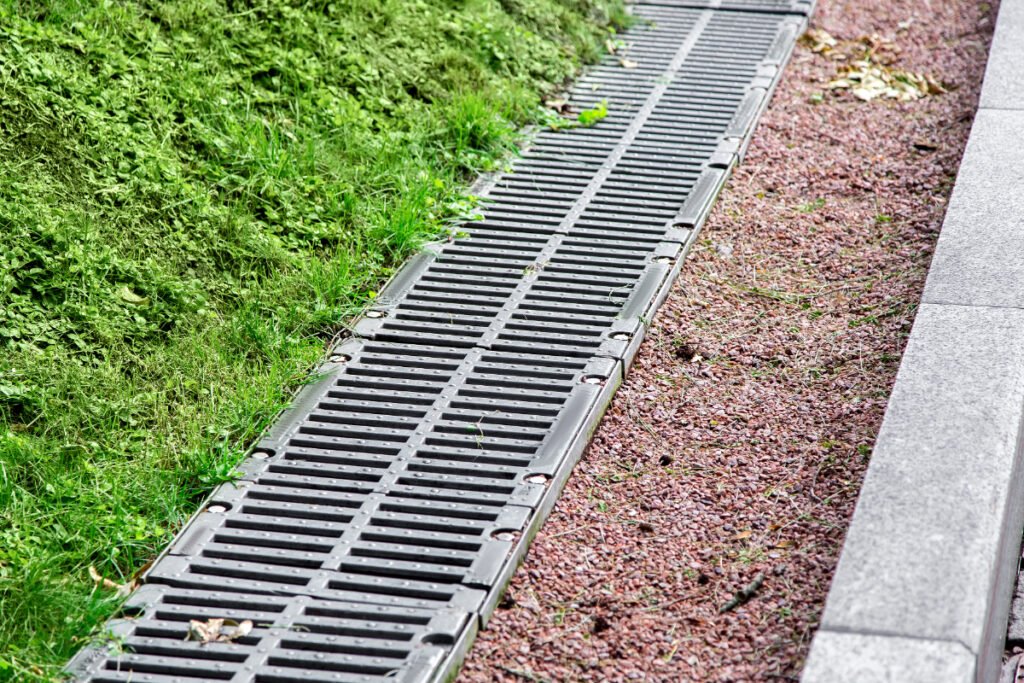
A trench drain is a gravel-only line drain or floor drain with a long, narrow sump and a grate that filters and releases storm water to the city sewer. Thus, it collects surface water, drains it, and prevents water pooling or flooding in residential areas and smaller backyards.
How Does It Work: A trench drain system is a pipe-less trench that takes in water from the top, lets it flow through the gravel, and releases it far off. However, since it works on gravity, it needs a steep slope to enhance water flow and proper drainage without clogging.
Unlike a french drain that deals with groundwater, a trench drain system collects the surface water from paved areas and works like an embedded gutter to avoid flooding. And its sturdier, high-strength body withstands tougher weather conditions and weights in parking and outdoor spaces.
Moreover, trench drains have a separate grate that traps leaves, waste, and other debris at the top and prevents blockages. So, they are easier to clean and maintain than a french drain. In contrast, they have more parts – channels, caps, and grates that need frequent brushing and might hike costs.
Trench drains have easier installation and can be great french drain alternatives as per the site’s terrain, soil strength, and water retaining capacity.
| Average Cost | $ 30 – 60 per linear foot |
| Average Lifespan | 25 – 50 years |
| Grate Materials | Cast Iron, Plastic, Reinforced Stone |
Never use acids, bleach, or abrasive cleaners to clean a trench drain as they might corrode the grate and cause a drainage problem later.
Difference Between a French Drain and a Trench Drain
French drains and trench drains are similar in their structure and mechanism but are used in different locations with different depths, costs, installation, and problems. So, let’s analyze all the prominent differences and pick the one that suits your yard drainage needs.
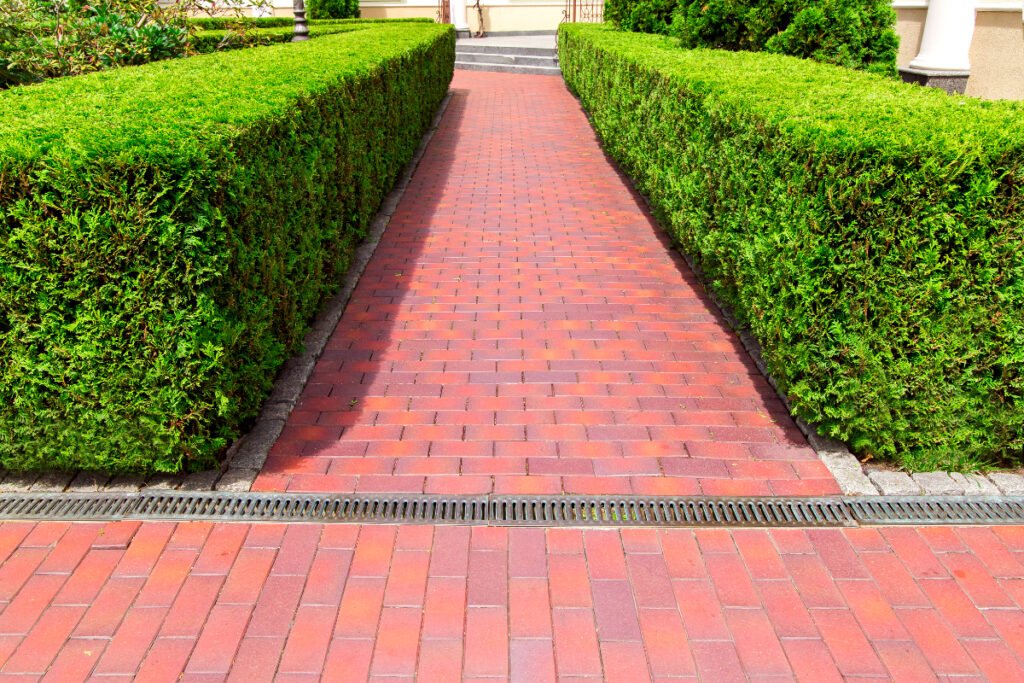
1. Location
French drains are mounted along the ramps, foundations, driveways, downward slopes, or around the basement waterproofing and sumps to prevent groundwater seepage and sogging.
In contrast, trench drains are installed around parking lots and paved areas to efficiently catch and drain the surface water.
2. Cost
French drain cost varies between $10-50 per linear foot for perimeter drains and $40-90 for interior french drains, whereas trench drains cost about $30-60 per linear foot for the gravel digging and installation.
3. Structure
French drains consist of a simple perforated pipe mounted in a sloping, gravel-covered trench.
In contrast, trench drains are long and narrow concrete, polymer, or steel drains with decorative grates and perforations to absorb water.
4. Function
French drainage systems channel groundwater and prevent surface water percolation along foundations, basements, and retaining walls.
On the other hand, trench drainage systems absorb the surface water and prevent flooding along your decks and parking lots.
5. Installation
French drain installation is on-site and customizable according to the plot, whereas trench drain channels are precast in a factory and then mounted on site.
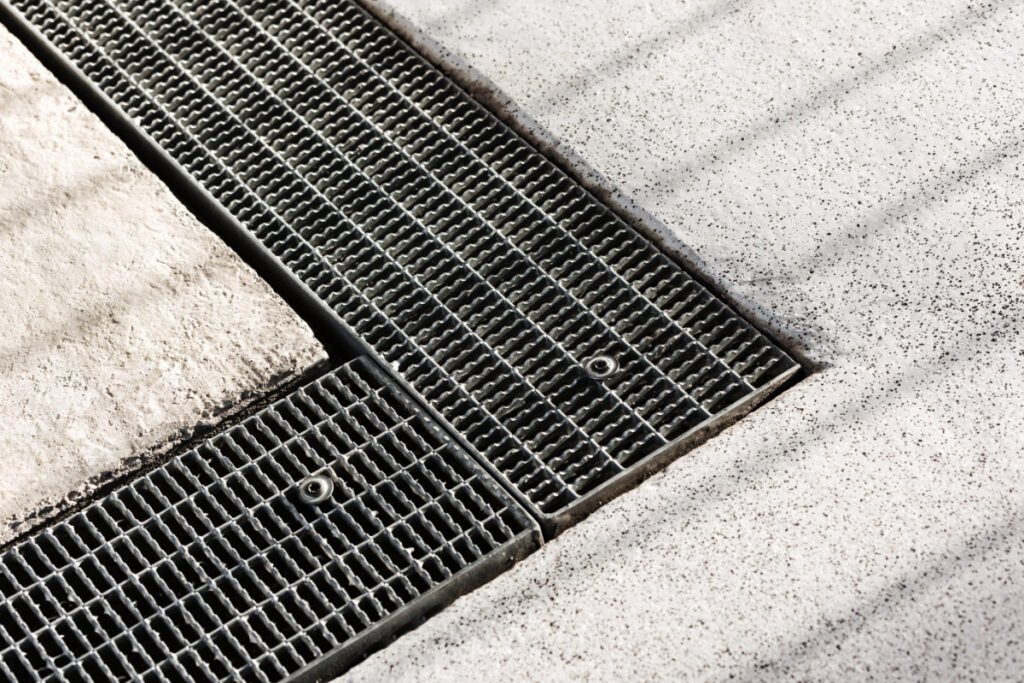
Here are some more points to compare the french drain and trench drain:
| Parameter | French Drain | Trench Drain |
| Type of Water | Underground / Subsurface Water | Surface Water |
| Effective Depth | 12 inches – 2 feet | 2 – 4 feet |
| Terrain | Flat or Sloping | Sloping |
| Cost | $ 10 – 90 per linear foot | $ 30 – 60 per linear foot |
| Grate | Non-grated, but have a drainage fabric for filtration | Covered with sturdy metal grates |
| Location | Basement, and foundation trenches | Paved areas, decks, and parking lots |
| Visibility | Well-hidden under grass and gravel | Starkly visible along the paving sides |
| Speed of Drainage | Average to Fast, depending on the sump pump | Extremely fast and efficient |
What Type of Drain Is the Best for Water Flow?
French drains have a higher water capacity of 240 gallons per minute, especially with the use of sump pumps and steep slopes.
In comparison to french drain, trench drains can move only about 11 gallons of water per foot on sloping terrains but might flood on flat land.
What Type of Drain Is Easy to Install?
Trench drains are easy to install and just have a simple channel and grate over a gravel trench. But, french drain installation is really challenging and requires precise slope, digging, and gravel packing for better stability.
Hence, trench drains can be DIY, but french drains require professional installation.
What Type of Drain Lasts Longer?
Trench drains have greater strength, durability, and weather resistance. So, they last longer, for about 20-50 years.
On the contrary, french drains are susceptible to clogging and blockages and might need a new drainage pipe after 8-10 years.
What Type of Drain Is Easier to Maintain?
Both french and trench drains are easier to maintain, but trench drains just need quick brushing and flushing of the grate, whereas french drains need regular snaking and washing, which could be tiresome.
Tips to Choose the Best Type of Drain for Your Yard
- Pick trench drains to discharge surface water from naturally sloping sites while choosing french drains for flat terrain.
- Select french drains to eliminate sogging, flooding, or marshiness from your yards.
- Use trench drains to drain water from paved parking lots, decks, and patios.
- Install french drains along underground foundations, walls, and basements, and limit trench drains only to above-ground applications.
Should I Use a French Drain or Trench Drain?
Use a french drain if you struggle with heavy water damage along your foundations, basements, and walls. But, use a trench drain to prevent water-logged decks, patios, roads, and parking lots on your site.
Why Do Trench Drains Fail?
Trench drains might fail because of a faulty slope, installation, heavy rain, or excess water runoff that pressurizes its grate and caps. Or, the trench’s location might differ from the natural flow of water, pressure the system and cause a failure.
Do Trench Drains Need Concrete?
Yes, trench drains need concrete or asphalt siding for better strength and support against excess water runoff. But, you can even use different plastic, metal, polypropylene, or polymer sheets for smaller residential applications.
Will a French Drain Catch Surface Water?
No, a french drain will not catch surface water on its own and will require a large catchbasin to do so. On the contrary, it will catch all the water runoff that seeps into the ground and drain it efficiently.
How do You Build a Trench Drain with Rocks?
You can build a simple gravel-only trench drain by digging a channel of about 35-36” deep, lining it with landscape fabric, and then covering it with rocks and gravel.
French drains and trench drains are surface water drainage systems, but while trench drains catch the water on the ground, french drains reroute it underground and then drain it efficiently. Moreover, trench drains are sturdy and withstand extreme weather, whereas french drains have a higher capacity and prevent heavy foundation repair.
So, now that we have compared the working and installation of these drains, you can choose one to have optimal drainage easily. Plus, you can even install a catch basin and drain all the stormwater away. So, don’t forget to refer to our analysis of ‘french drain vs catchbasin’ to know more about it.

